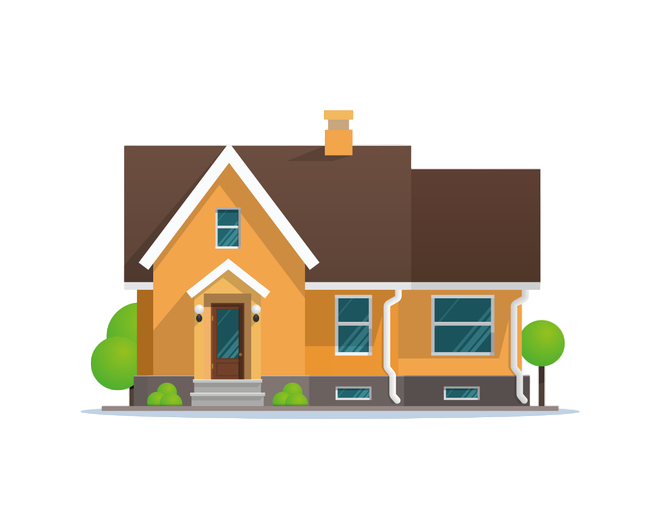Buying a home is a major life decision, and for Veterans, it’s important to find the right financing option that meets both current needs and future goals. One such option is the VA Adjustable-Rate Mortgage (ARM).
Also known as a VA hybrid ARM, these home loans can be a great alternative to traditional fixed-rate mortgage loans, especially when high-rate environments challenge affordability. VA ARMs are known to initially offer lower rates than fixed-rate mortgages (FRMs) but come with the possibility of rate adjustments over time.
Learn about VA ARM loans, how they work, and whether they could be the right choice for you as a Veteran homebuyer.
Key takeaways:
- VA ARMs can make good financial sense for some mortgage borrowers, but it’s important to understand your monthly payments could go up over time.
- VA ARMs are hybrid ARMs that are fixed for a set period (typically five years) before adjusting annually thereafter.
- Several key factors influence VA ARMs, including the interest rate index, margin, adjustment cap, and the frequency at which your rate can adjust.
- VA ARMs differ from fixed-rate mortgages, with pros and cons for both loan types.
- It’s important to know how to calculate your VA ARM mortgage payment to not overextend yourself.
What is a VA Adjustable-Rate Mortgage (ARM)?
A VA Adjustable-Rate Mortgage (ARM) is a type of mortgage loan backed by the US Department of Veteran Affairs. It has a variable interest rate that may fluctuate throughout the loan’s life.
This type of home loan offers an initially lower fixed interest rate for a specific number of years (typically five, seven, or ten years). After the fixed period, the rate becomes adjustable, meaning it can change periodically based on market conditions.
For Veterans looking to reduce their initial monthly mortgage payments and save money in the short term, VA ARMs can be a great option. However, since the rate can increase after the fixed-rate period, it’s important to assess both your current and future financial position to ensure an ARM is an ideal solution for your current situation.
How VA ARM Loans Work
VA ARM loans feature an initial fixed-rate period where the interest rate stays the same, followed by annual adjustments. They are typically fixed for five, seven, or ten years and adjust annually afterward.
- 5/1 VA ARM: With a 5/1 ARM, the “5” stands for the number of years the interest rate remains fixed. For the first five years, your rate won’t change, providing predictable payments. The “1” means that the rate will adjust once per year after those five years. This annual adjustment continues for the life of the loan.
- 7/1 ARM and 10/1 ARM: Some lenders offer ARMs with longer fixed-rate periods, such as 7/1 or 10/1 ARMs, which last seven or ten years. A longer fixed period gives you more time to plan for potential rate increases and evaluate your financial situation before the adjustable-rate period begins.
Here’s an example of how a VA 5/1 ARM could work:
| 5/1 Adjustable-Rate Mortgage | |
|---|---|
| Year 1 | 4% |
| Year 2 | 4% |
| Year 3 | 4% |
| Year 4 | 4% |
| Year 5 | 4% |
| Year 6 | 6% |
| Year 7 | 5% |
As you can see, the interest rate (4% in this example) remains the same for the first five years. The rate then changes annually based on the market rate, also called an index rate.
VA ARM Loan Factors
Several factors influence the interest rate and payments on VA ARM loans. These include:
- Interest Rate Index: The adjustable rate on a VA ARM is tied to a specific financial index, such as the U.S. Treasury rate or the London Interbank Offered Rate (LIBOR). When this index rises or falls, your mortgage rate adjusts accordingly.
- Margin: The margin is an added percentage point that the lender applies to the index rate. This margin stays the same for the life of the loan, so even though the index may change, your lender always applies the same margin when calculating your new rate.
- Initial Fixed-Rate Period: This is the number of years your rate stays fixed. It’s important to understand how long this period lasts since, once it ends, your rate could increase along with your monthly payment.
- Caps: VA ARM loans have rate adjustment caps that limit how much the interest rate can increase or decrease per year and over the life of the loan. For instance, a 2/⅕ cap means the rate can increase or decrease no more than 2% at the first adjustment, no more than 1% annually after that, and no more than 5% total over the life of the loan.

Check your VA Home Loan eligibility and get personalized rates. Answer a few questions and we'll connect you with a trusted VA lender to answer any questions you have about the VA loan program.
Pros and Cons of VA ARMs
As with other types of home loans, VA ARM loans have advantages and disadvantages.
Pros
- Lower Initial Interest Rate: VA ARMs typically start with a lower interest rate than their fixed-rate loan counterparts, which can lead to lower monthly payments during the initial period.
- Short-Term Savings: If you plan to sell or refinance before the adjustable period begins, you could save money compared to a fixed-rate loan.
- Great for Starter Homes: If the home you’re buying is a starter home and you plan to buy a “move-up” home in the near future, you could benefit from the savings associated with the initial lower fixed rate and then move into your new home before the rate adjusts.
- Rate Caps: VA ARMs come with rate caps, limiting how much your interest rate can increase. Your rate can only increase by a predetermined percentage, regardless of the current rate environment.
Cons
- Uncertainty After Initial Period: Once the fixed period ends, your rate can adjust annually, which could result in higher monthly payments.
- Potential for Unaffordability: If mortgage rates increase significantly after the initial period, your payments could increase past the point of affordability.
- Rate Caps Also Apply to Rate Decreases: While caps limit how much your payment can increase, they also limit how much it can decrease. Should interest rates experience a sudden and significant drop, you may not be able to benefit from the lower rates without refinancing.
- Refinancing Costs: Many who choose an ARM loan do so with the goal of selling or refinancing prior to the rate adjusting. If you choose to refinance before the adjustable period, you have to pay closing costs and fees, which could negate the initial savings.
Types of Adjustable-Rate Mortgages
VA ARMs come in several types based on how long the initial fixed-rate period lasts:
5/1 ARM: A fixed interest rate for the first five years that offers stable and predictable payments. After the initial period, the rate can adjust each year. This option can be ideal for those planning to sell or refinance soon (within the first five years) or for homeowners anticipating positive changes in their income or financial position.
7/1 ARM: A fixed rate for the first seven years that offers even more stability and predictability. After the seven-year period, the interest rate can fluctuate annually. It’s a great option for those who prefer a longer fixed rate upfront but also predict future changes or improved financial stability.
10/1 ARM: A fixed rate for the first ten years that provides the longest fixed-rate period with ten years of consistent, predictable payments. Following the initial 10-year period, the interest rate can adjust yearly. This can be an attractive option to VA borrowers looking for extended stability and are confident they’ll be in their homes long term.
VA ARM Loan Requirements
The requirements for VA ARM loans are generally the same as those for traditional VA loans.
- VA Eligibility: You must meet the VA’s eligibility requirements, which usually include serving a minimum period of active duty, being a member of the National Guard or Reserves, or being a surviving spouse.
- Credit and Income: You need a satisfactory credit score (typically 580 or higher) and stable income to qualify for a VA ARM loan.
- Residual Income: The VA requires mortgage borrowers to have a certain amount of residual income, which is the income left over after major expenses are paid, such as your mortgage and utilities.
There are no unique requirements specific to VA ARM loans compared to fixed-rate VA loans, but your lender may have additional criteria or overlays.
VA ARMs vs. Fixed-Rate Mortgages
When deciding between a VA ARM and a fixed-rate mortgage, it’s essential to understand the key differences.
Fixed-Rate Mortgage
These loans offer a consistent interest rate for the life of the loan. For example, if you lock in a 6.25% rate at closing, that’s the rate you’ll pay for the next 15 or 30 years, regardless of market fluctuations. The major advantage is the predictability of your monthly payments, which can be helpful for long-term budgeting. However, if interest rates fall, you won’t benefit unless you refinance, which could mean closing cost fees.
VA ARM Loans
With an ARM, you start with a lower fixed rate (e.g., 4% for the first 5 years). After the initial period, the rate adjusts annually based on market conditions. If rates rise significantly, your payments could increase, but you also have the potential to save during the fixed period, especially if you plan to sell or refinance before the rate adjusts.
Calculating VA ARM Loan Payments
To calculate a VA ARM loan payment, follow these steps:
- Determine the Loan Amount. Start by establishing the total amount you’re borrowing. This is done by determining the purchase price of the home you want to buy and then adding the appropriate VA funding fee (if applicable).
- Know Your Initial Rate. With the help of a mortgage calculator and your estimated loan amount, use the initial interest rate to calculate your monthly payment during the fixed period.
- Consider Future Adjustments. After the fixed period, calculate potential rate adjustments by factoring in the index, margin, and rate caps. Your lender can help with these figures.
- Account for Caps. When estimating future payments, know and account for rate caps that could result in rate (and payment) increases.
It’s important to account for market fluctuations when calculating VA ARM payments. Monitoring housing market conditions and interest rate trends can help you forecast possible payment adjustments and plan accordingly.
Is the VA ARM Loan Right for Me?
VA ARM loans offer unique benefits, particularly for Veterans looking for short-term savings or those who plan to move or refinance before the adjustable period begins. However, they also carry risks, such as potential rate increases. Understanding the factors affecting VA ARM loans and how they compare to fixed-rate mortgages is crucial when deciding.
Whether a VA ARM is right for you depends on your financial situation, future plans, and risk tolerance. Speak with an approved VA lender to explore your options and ensure you’re making the best decision for you and your family.




About the comments on this site:
These responses are not provided or commissioned by the bank advertiser. Responses have not been reviewed, approved or otherwise endorsed by the bank advertiser. It is not the bank advertiser’s responsibility to ensure all posts and/or questions are answered.